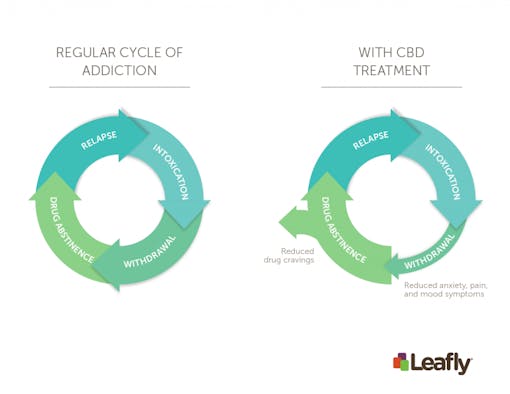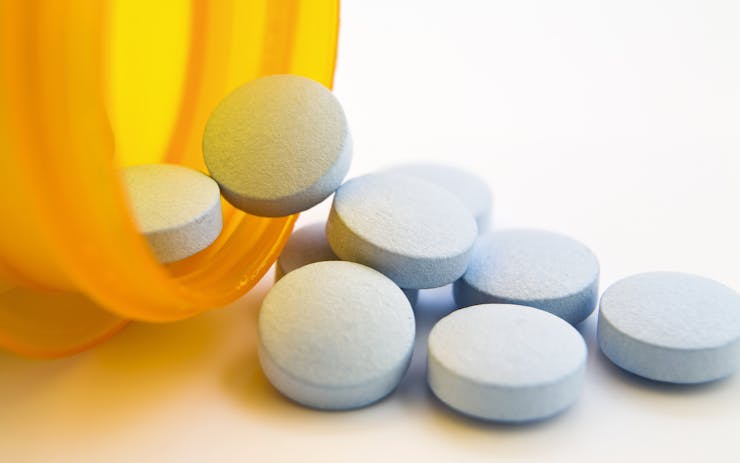Cannabis and opioids are both known for their analgesic, pain-relieving effects. However, opioids are highly addictive—between 1999 and 2014, sales of prescription opioids in the United States quadrupled, with staggering increases in overdoses. In the healthcare system, 49% of patients seeking treatment for pain leave with a prescription. Because the risk of addiction and overdose associated with opioids is so great, finding a drug substitute with less abuse potential is critical.
Amanda Reiman, manager of Marijuana Law and Policy at the Drug Policy Alliance, defines substitution as a “conscious choice to use one drug (legal or illicit) instead of, or in conjunction with, another due to issues such as: perceived safety; level of addiction potential; effectiveness in relieving symptoms; access and level of acceptance.”
It’s important to take these factors into consideration when determining the substitution potential of cannabis. The ideal substitute will perform better than the previous medication by being more safe, effective, and accessible, while also being less addictive.
States That Legalized Medical Cannabis Show Decreased Opioid Use
There is already evidence that cannabis is used to substitute opioids. In the United States, total prescription drug spending in Medicare for both program and enrollee spending fell by $165 million per year in 2013 after the implementation of several state medical cannabis laws. The most common reported drug substitution was opioids (32-36% of total substitutions), followed by benzodiazepines and antidepressants.
Data from self-reported studies show that cannabis is already being used to substitute some prescription drugs, and states with legalized medical cannabis have seen decreases in prescription drug rates. Biologically speaking, though, what makes medical cannabis effective for pain relief and a possible substitute for prescription opioids?
Why Can Medical Cannabis Be an Effective Opioid Substitute?
Opioids and THC have analgesic effects because they block pain signals in our nervous system. THC is a plant cannabinoid, most commonly known for its psychoactive effects and causing the “high” associated with cannabis consumption. The THC cannabinoid binds to the CB1 and CB2 receptors of the endocannabinoid system, while opioids bind to opioid receptors.
Evidence suggests CBD can reduce drug cravings and opioid withdrawal symptoms, which suggests CBD could be an effective treatment to opioid addiction.
CBD is another cannabinoid that is known for its therapeutic effects. It binds to many different receptors in the brain and can lessen the effects of THC. Evidence suggests CBD can reduce drug cravings and opioid withdrawal symptoms, which suggests CBD could be an effective treatment to opioid addiction.
Opioids and THC in combination offer comparable pain-relieving effects compared to opioids alone. This interaction can be used to reduce opioid doses for pain management and slowly wean patients off opioid medications altogether as they switch to cannabis-based treatments.
Cannabis and Opioids Together Offer Greater Pain Relief at Lower Doses
Several studies indicate that cannabis interacts with opioids and alters the associated pain-relieving effects. When co-administered, patients can use a lower dose of opioids and achieve the same level of pain relief, thereby reducing the risk of side effects and addiction.

Figure 1: When THC and prescription opioids are co-administered, the same level of pain relief is achieved with lower opioid dosage. This can prevent some of the negative side effects of opioid treatment and allow patients to reduce opioid use. (Photo credit: Amy Phung/Leafly)
Cannabinoid and opioid pain-relieving effects both work by binding to receptors at the surface of cells and setting off a sequence of events in the cell that result in no pain signal release. The parallel mechanisms of action for opioids and cannabis allow for effective pain relief with co-administration.
For these reasons, cannabis is believed to supplement the effectiveness of opioids in pain management. When THC and morphine are used together, for example, the same level of pain relief is observed at lower doses compared to morphine treatments alone.
If implemented, this treatment method could be effective in reducing opioid use and the associated negative side effects. Patients could start taking smaller doses of opioids to avoid addiction and relapse, since the addition of THC would provide comparable pain relief. This has the potential to effectively wean patients off their opioid regimen. Further research is needed to determine the exact mechanisms of interaction between opioids and cannabinoids, and to investigate new treatment plans for patients seeking improved chronic pain management.
Cannabidiol (CBD) Reduces Negative Side Effects of Opioids
Drug cravings are a major cause of relapse and a symptom of addiction. However, current treatments are often ineffective at preventing relapse events from occurring. Cannabis could be used to effectively reduce drug cravings and the chance of relapse.
CBD could help break the cycle of addiction by preventing relapse and treating withdrawal symptoms.
Researchers are investigating CBD as a possible treatment for addiction. Animal and human studies show that CBD is non-addictive and reduces drug cravings. CBD could also be used to treat withdrawal by reducing pain, anxiety, and mood symptoms.

Figure 2: CBD treatment can reduce the chance of relapse for those struggling with drug addiction by altering the withdrawal and drug abstinence phases. Symptoms of withdrawal will be treated, decreasing pain, anxiety, and mood symptoms. CBD can promote drug abstinence by reducing drug craving through suppression of the reward system of the brain. (Photo credit: Amy Phung/Leafly)
CBD could help break the cycle of addiction by preventing relapse and treating withdrawal symptoms. With the heavy use of prescription opioids in the United States, this could help treat addiction and drug abuse, reduce risk of overdose, and lower prescription rates of opioids.
Possible Solutions for the Opioid Epidemic
With the opioid epidemic in full swing, finding a solution to this problem has become more urgent. The most helpful option would be to implement a drug substitution program, finding something that has comparable therapeutic effects with the least amount of side effects possible. Medical cannabis may be a good substitute for prescription opioids because it has similar symptom-relieving effects, especially for chronic pain.
In legalized medical cannabis states, substituting opioids with cannabis and decreasing opioid overdose deaths have already been observed. Cannabis can be used to wean patients off their current opioid regimen and provide pain relief that is comparable to opioid treatment. There is the potential to fight addiction with CBD, reducing drug cravings and symptoms of withdrawal. More research is needed to identify specific treatment plans for pain relief and drug addiction, but it’s possible that a mixture of THC and CBD could be an effective medication against chronic pain and opioid drug dependence.






